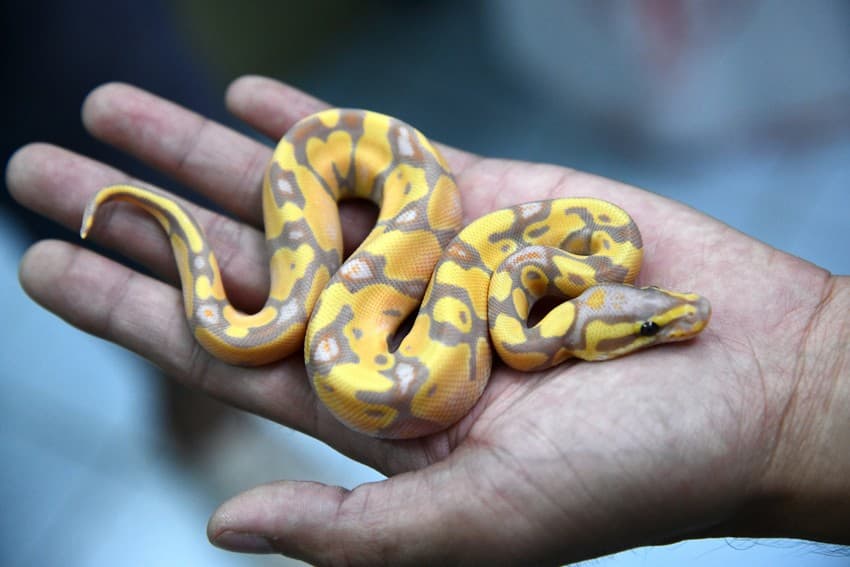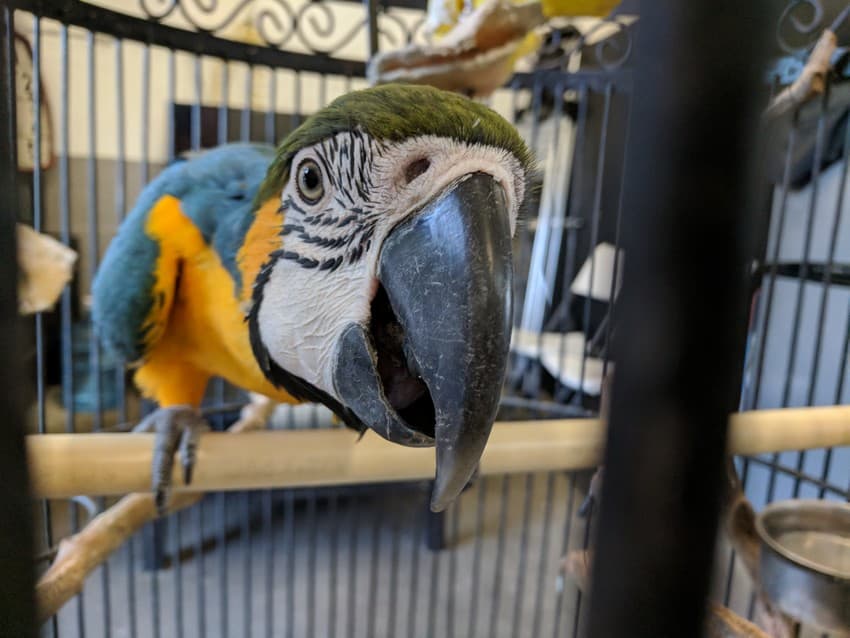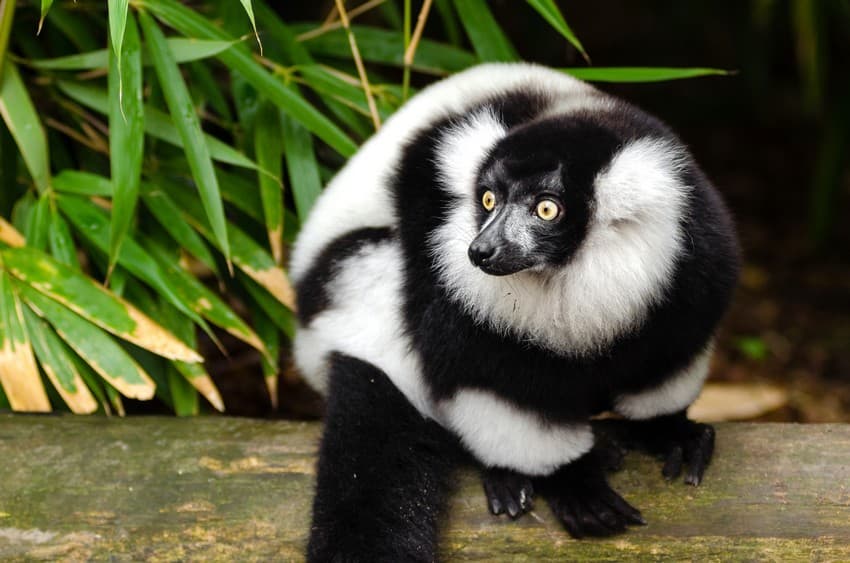Feeding the Deadly Pet Trade in Exotic Species
This article is the first in the special WCT Blog series which will focus on the serious issue of growing demand for exotic species in India and the urgent need for stronger wildlife laws for better regulation of trade in exotic species in the country.

Pet trade in India sees innumerable exotic animals, including reptiles, being smuggled into the country to meet the growing demand for these animals. Seen here is a ball python, which is commonly kept as pet, globally. This image is representational. Credit: Trisorn_Triboon_CC BY-SA 4.0
Would you be too surprised to learn of someone familiar owning red-eared slider turtles, blue and gold macaws, African grey parrots, lovebirds, Siamese fighting fish or even clown fish ? Most probably, not. Although, you may be in for a bigger surprise to know that several Indians are also in possession of exotic species far more rare, endangered, and even protected under international treaty laws. Animals like kangaroos, pythons, marmosets, lemurs, bushbabies, antelopes, lizards, alligators, etc. feature in this ostentatious list of exotic animals owned by individuals across India, mostly illegally. And this is a huge problem. Not just for the animals which undergo unimaginable suffering and trauma in transit and in cramped cages in markets, with only a few surviving the ordeal only to be destined for a life deprived of natural means. The problem, like a bullet, runs far deeper rupturing layers of ecology, environment, humanity and ethics.
Insatiable Demand For The Exotics
The demand for exotic species is on the rise in India. It is important to wonder where and how the exotic animals end up in wildlife markets, such as the famous Crawford Market in Mumbai, Maharashtra, and in people’s homes.

Parrots such as the Blue and Gold Macaw (seen here), native to South America, are in great demand in India and abroad. The notorious pet trade is direly impacting parrot populations in the wild. This image is representational. Credit: Grendelkhan_CC BY-SA 3.0
The growing demand feeds into the deadly illegal wildlife trade which is one of the major causes for species extinction on the planet. As wildlife populations thin, ecosystems begin to get dismantled, impacting humans directly as our lives depend on the myriad services of natural ecosystems. With climate change already upon us, restoring biodiversity, is the need of the hour. Buying a single parakeet, or a fish, or even a snake may seem like an harmless transaction to many. But, for the dealers and traders to be able to supply you with that one exotic animal, means tugging at the much larger supply chain that feeds the international black market for demands beyond the pet trade. To put things into perspective, the illegal wildlife trade is one of the biggest organised crime sectors in the world, ranking below only drugs, arms and human trafficking. It is a multi- billion dollar industry that is ravaging more than just biodiversity. The latest report by the Wildlife Justice Commission titled Convergence of wildlife crime with other forms of organised crime has put together powerful case studies from different geographies that strongly indicate the undeniable linkage between wildlife crime and other aforementioned international organised crimes. It is also believed that wildlife trafficking helps fund many terrorist and militia activities, putting national security of numerous countries and basic human rights at risk.
It is hard to ignore the shocking levels of animal cruelty involved in the illegal trade of wildlife. It begins right from the methods used to capture and transport wild animals from their natural habitats. Those that are bred in captivity fare no better and the conditions that they are all displayed and kept in at obscure pet markets is the stuff of nightmares. In October 2019, the Customs department at the Trichy International Airport in Tamil Nadu, seized a suitcase packed with hundreds of exotic reptile species which were being smuggled in the most cruel and inhumane conditions. About 300 iguanas were stuffed within small boxes, snakes packed in small coke bottles. Apart from them, about 200 Malaysian tortoises, various spiders and scorpions were also retrieved from the suitcase. More than half of these animals were found to be dead at the time of opening the suitcase, while some others had missing or broken body parts. And this is only the tip of the iceberg. Thousands of exotic animals are smuggled in similar fashion into India every year. Only those consignments which can be proven to have crossed international border illegally can be charged with crimes. But, those consignments that escape or manage to evade detection, once inside Indian territory are more or less untouchable by wildlife protection law enforcement, as no law or policy has yet been designed to apprehend people illegally owning exotic animals on Indian soil.
The lack of any implementable law is further compounded by the lack of seamless enforcement at international borders. India’s porous borders with Bangladesh and Myanmar are considered to be two major entry points for exotic wildlife smuggled into the country. The far more porous borders of Myanmar, Laos, and Thailand have long been regarded as hotspots for those seeking to smuggle wildlife internationally. A Mongabay – India report from April 2021 cited various seizures of exotic animals made in different regions of northeast India in the past year by multiple enforcement agencies. In February 2020, 80 exotic animals including rare species such as leopard tortoise, red-footed tortoise, orange and green iguana, bearded dragon, were rescued near India-Myanmar border in Champaign district of Mizoram. In July 2020 a kangaroo, six blue macaws, two capuchin monkeys, and three Aldabra tortoises were rescued in Cachar district in Assam, along the Assam-Mizoram border. In January 2021, the Directorate of Revenue Intelligence (DRI) rescued 30 exotic birds and a primate native to Africa, called red-eared guenon, in Kolasib district along the Mizoram-Assam border.
In India, trade in native species is prohibited under the Wildlife Protection Act, 1972. But, that has led traders and smugglers to turn their attention to exotic animals and run amok. Unfortunately, such trade does not fall under the ambit of the 1972 Act, leaving a gaping hole in India’s wildlife protection system. This glaring lacuna is well-exploited by those involved at various levels of the wildlife trade supply chain, since any legal persecution for engaging in illegal trade in exotic species is almost out of the question.
“Contrary to popular belief, exotic pet trade is far more widespread than one can imagine, posing a substantial extinction risk to innumerable species of vertebrates and threatening the very integrity of natural ecosystems. Apart from a nation-wide awareness campaign to inform prospective buyers about the ill-effects of this seemingly innocuous hobby, there is an acute need of amending both national and international Acts to deter traders and syndicates from luring ill-informed citizens into this dreadful practice. People need to know that the best sanctuary for wild animals is their natural habitat, not a man-made facility inside some city home or farmhouse. There is also a need to develop a pictorial guide of all wild species being traded across the planet and the same should be made available online to inform the public about the negative impact of exotic pet trade on these species,” observes Dr. Anish Andheria, President, Wildlife Conservation Trust.
COVID-19 – A Conversation Starter
There is another, serious consequence of wildlife trade that has only now grabbed the attention that it deserves. It is the risk of emerging infectious disease outbreaks among humans through pathogens, such as certain bacteria and viruses, passed down from animal hosts, just as COVID-19 is suspected of having originated. The understanding of the inextricable interconnectedness that exists between the planet, wildlife and humans is growing among people. The COVID-19 pandemic further illustrates the urgent need to better regulate trade in wildlife and clamp down on illegal trafficking and trade in native as well as exotic animals, as the conditions in which these animals are captured, transported, kept captive and bred increase the risks of animal-to-human transmission of zoonotic (transmissible between animals and people) diseases.
In lieu of this, the Indian government passed an advisory in June 2020, asking the Indian citizens to disclose undocumented ownership of exotic wild animals in a bid to regulate the trade. Over 30,000 Indians voluntarily declared their possession of exotic animals which were previously undocumented. The government advisory stated that no action would be taken against the owners of the live exotic animals despite carrying no proper documentation or permits. They were promised amnesty. This lack of punitive action against illegally owned exotic animals is also reflective of the absence of a concrete law or provisions within India’s wildlife protection and conservation legal framework that ought to extend protection not just to native species, but also non-native wildlife, especially those listed under the Convention on International Trade In Endangered Species of Wild Fauna and Flora (CITES)**.
Among the diverse motley of exotic animals declared by the owners in response to the advisory, were endangered species whose commercial trade has been banned under CITES. As per the IndiaSpend Report, critically endangered species such as the black-and-white ruffed lemur, native to the island country of Madagascar, and the endangered East African oryx or beisa ,native to Africa, have been reported to be in possession of different individuals in India. Apart from them, various species of kangaroos, tortoises, pythons, parrots, monkeys etc. among others make it to this list of exotic animals (some of them critically endangered and particularly rare in their native countries) that are owned by far too many Indian citizens. According to the study titled ‘A Looming Exotic Reptile Pet Trade in India: Patterns and Knowledge Gaps’ published in the Journal of Threatened Taxa (JoTT) in May 2021, 98.6 percent of the reptile imports into India between the years 1976 and 2018 went unreported to the concerned authorities.

Black-and-white ruffed lemur, native to Madagascar, was one among several endangered exotic species declared to be in illegal possession of thousands of individuals in India. This image is representational. Credit: Mathias Appel_CC BY-NC 2.0
The IndiaSpend report revealed that 30 percent of all voluntary disclosures emerged from the states of West Bengal, followed by Kerala (26 percent), Tamil Nadu (13 percent) and Maharashtra (8 percent). The findings of the aforementioned study published in JoTT indicates that Tamil Nadu, Maharashtra and West Bengal “hold the major proportion of traders dealing with live exotic reptiles.”
Our responsibility towards wildlife and ecosystems does not end with the protection and conservation of our native biodiversity. Interconnectedness between the various components of ecosystems does not recognise borders. Nor does the domino effect of collapsing wildlife populations and ecosystems. It is high time that India committed to do much more for the protection of non-native biodiversity and ecosystems, and does so with a vengeance.
——————————————————————————————————————————————————————
What Is CITES? **
Concerned by the threat the unregulated international trade in wildlife posed to the world’s flora and fauna, the members of the IUCN (International Union for Conservation of Nature), in 1963, adopted a resolution and the CITES (Convention on International Trade in Endangered species of Wild Fauna and Flora) draft was passed. CITES truly came into force in 1975 in the form of an international agreement between governments. It is essentially an international treaty to curtail the threat of international trade that endangers the survival of innumerable species in the wild, globally. Presently, 180 countries are signatories to the agreement, including India, and are expected to implement CITES.
Nearly 35,000 species are protected under CITES at the moment, and are categorised under three main appendices. – Appendix I , Appendix II and Appendix III in the decreasing order of level of protection bestowed and trade restrictions put depending upon the level of extinction threat the species face. For example, gorillas, lady slipper orchids and giant pandas fall under Appendix I of CITES as they are gravely threatened with extinction in the wild and there are restrictions in place on commercial trade of the species.
India signed the Convention in 1976. The Director of Wild Life Preservation, Government of India, is designated as the principal Management Authority for CITES in India, while the Wildlife Crime Control Bureau (WCCB) has been designated as the Assistant CITES Management Authority body. WCCB’s Regional Deputy Directors and the Customs Authorities have the power to enforce the provisions of CITES in India.
Read other articles in the series:
- Why India Needs Stronger Laws to Protect Exotic Species on its Soil
- India’s Burning Exotic Pet Trade Crisis
- [Expert Speak] Law Over Advisory is the Urgent Need of the Hour
- Forced to Pay the Ultimate Price for the Pet Trade
——————————————————————————————————————————————————————
About the author: Purva Variyar is a conservationist, science communicator and conservation writer. She works with the Wildlife Conservation Trust and has previously worked with Sanctuary Nature Foundation and The Gerry Martin Project.
Disclaimer: The author is associated with Wildlife Conservation Trust. The views and opinions expressed in the article are her own and do not necessarily reflect the views and opinions of Wildlife Conservation Trust.
——————————————————————————————————————————————————————
Your donations support our on-ground operations, helping us meet our conservation goals.
——————————————————————————————————————————————————————

